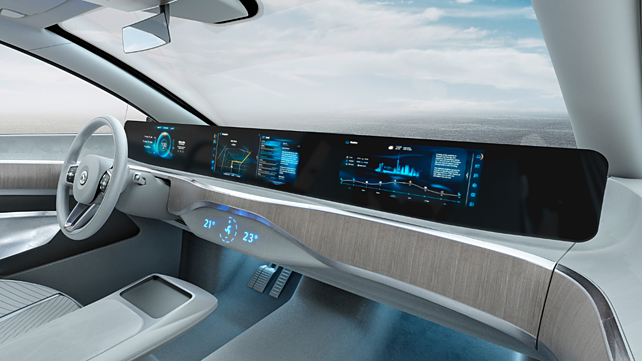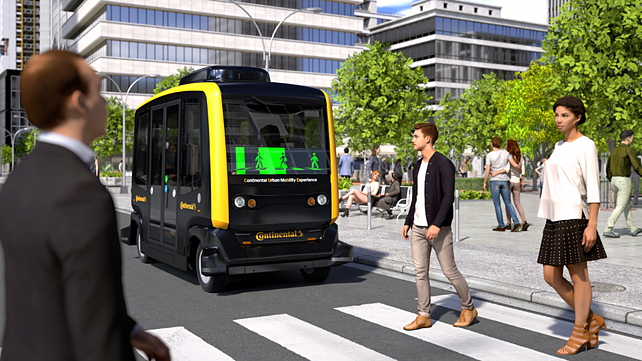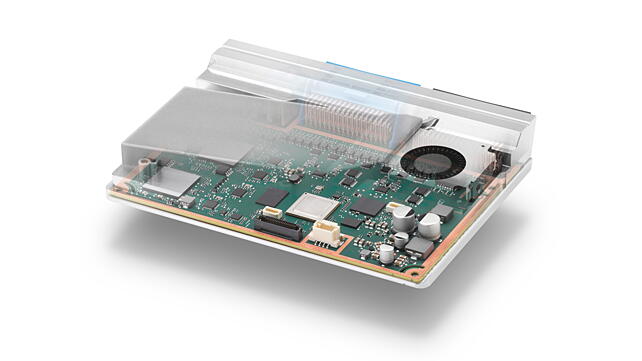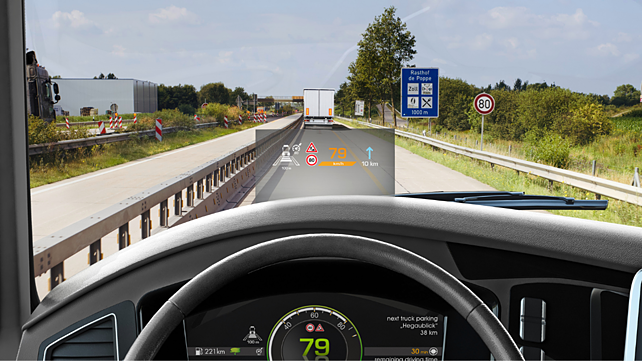
Frank Rabe holds a Master’s degree and a PhD in Electrical Engineering, both from the Technical University of Braunschweig, Germany. After leaving university in 1995, Dr Rabe joined Siemens, Healthcare Division, where he served in various capacities in Germany and the United States. In 2006, he moved to the Automotive Division of Siemens. In 2007, Frank joined Continental AG as part of the acquisition of Siemens VDO. He also served as Head of Corporate Quality and Environment, before taking over as Head of the Human Machine Interface business unit, Continental AG in 2016.
While functionality and convenience are key deliverables, there is a strong desire to use large in-vehicle displays as a differentiator. How does Continental view the trend of larger displays from a mature markets perspective?
The future cockpit is fully connected and will act increasingly as a Digital Assistant, taking on different roles and responsibilities such as a driver’s companion or coach. So, overall, our vision of the future cockpit is digital, immersive, and “shy”.
From a digital perspective, there will be many and/or large displays in the car that are seamlessly orchestrated by a central computing unit such as our Cockpit High Performance Computer (Cockpit HPC). This enables a consistent visual- and interaction design across all displays and other devices in the vehicle – may it be touch, gesture, speech, or any other kind of interaction.
Secondly, from an immersive perspective, creating a user experience with more depth, we have recently presented a 3D display technology that works without glasses or eye-tracking and can provide a natural 3D visualisation to all vehicle occupants at the same time. Interaction with the holographic 3D elements popping out of the screen is possible via gestures or touch with haptic feedback. In combination with 3D audio systems, this will make the cockpit experience even more immersive.
Beyond traditional displays, there will be hidden (or shy) displays behind a translucent material with a natural look and texture of wood or leather. The display will only become visible in case there is relevant information to present. Touching such a shy display adds to the tactile experience in the car. When the display is inactive, you will just see the natural surface. This is not only a breakthrough technology for interior designers but also a great thing for users considering how overwhelming information overflow can be, especially while driving a car.

On top of this, large, seamless displays, potentially spanning from pillar to pillar (pillar2pillar solution), create a dominant surface to enrich the UX in the interior. As the vehicle interior is a closed micro-cosmos – sometimes referred to as a cocoon or an evolving new type of ‘home on wheels’ – it can offer a level of digital sensory immersion even modern homes will find challenging to keep up with.
That is why large seamless displays together with immersive audio solutions are valuable enablers of a joyful vehicle interior UX. Only recently, Continental has won the first order for a pillar-to-pillar display in a volume model.
How does Continental view the growth of larger displays in the Indian context?
Compared to other markets, the Indian market is at a nascent stage, primarily due to the required connectivity factors to bring in a large in-vehicle display with multiple functions. Currently, the demand is higher for digital displays.
In 2020, Continental began production of India’s first fully digital instrument cluster. Continental successfully adapted a product that belonged to luxury vehicles and mature markets, as an affordable solution into a mid-size sedan, without compromising on functionality, user experience, or safety. The product, which is currently seen in Hyundai’s new Verna (launched in 2020), is a great example of innovation and design that enhances user experience and safety.
With time, larger displays will make its way into the vehicles in India, enhancing more usable and interactive HMI features. To begin with, the luxury segment will see the entry of larger displays in the next five to six years in India.
There are strong views against larger displays – that they are being distractions for drivers. What’s Continental’s view on this?
We at Continental are committed to Vision Zero: zero fatalities, zero injuries, and zero crashes – and are developing solutions and technologies that will help us take a step closer to that goal.
The design and functionality of the display become critical to ensure this goal. The information shared on the display combined with the user experience should be designed to not distract the driver, regardless of its size. How the information is laid out and can be accessed by the driver is critical for an intuitive operation and safe driving.
It is therefore a question of fulfilling the desire for digital functions with keeping distraction at a minimum.

Overall, HMI solutions reduce driver distraction, because simple prohibitions such as not using the smartphone, for example, do not help. Therefore, smartphone functions must be integrated into the secure HMI. The aim is to achieve the most intuitive dialogue possible, even without words, e.g. through displays with three-dimensionally shaped surfaces or haptic feedback that allow blind operation.
Also, it is important to meet the different preferences and needs by making the communication between driver and vehicle multi-modal. Thus, different channels must be used and the dialogue between driver and vehicle must be designed acoustically (functional audio & voice control), haptically (haptic feedback, vibration, & 3D shaped displays), and visually (HALO displays).
In this scope, we have also developed specific display solutions, whose elements and functions are hidden or invisible, when not in use. This ensures that drivers are less distracted and that accidents can be further avoided (ShyTech/functions on demand).
Further, we offer additional safety mechanisms through approaches such as situation-adapted operation, which allows certain complex operations only in the stand or in the future in automated driving mode, or the possibility of interrupting operations at any time and resuscitating them later.

The principle is to prioritise the information that is needed. Sensors (such as cameras) in the vehicle's interior will also be able to monitor the condition of the driver and passengers, thus making the dialogue even better, safer, and more appropriate to the situation.
If the driver's gaze has been turned away from traffic for too long or if he is about to overlook a potentially dangerous situation, the vehicle may draw the driver's attention through optical, acoustic, or haptic (seat vibration, etc.) signals back in the right direction.
Larger displays in autonomous vehicles would of course offer far higher functionalities – including windows that can be used as displays – but in the current context, how big is too big?
You cannot speak of too big displays. Seamless large displays are becoming the new dominant selling factor for cars because they are the most important part of the UX. However, today, as long as the driver still has to drive himself, it is necessary to determine what information is displayed where and to what extent.
The driver should not be distracted from driving at any time, which is why information supporting the driving task, the navigation, or warning signals are useful, but other offers are rather not. This is to be considered regardless of the size of the display.
On the road to fully automated driving, however, the driver's role change and the resulting new needs and requirements are some of the biggest challenges for human-machine interaction. While the driver was previously exclusively involved in the driving task, he now becomes a critical user and cockpit supervisor, who also wants to be entertained. For such entertainment offers, large displays are suitable.
For role change, however, the driver must always know how the vehicle is operating, what it is reacting to, and what driving mode it is currently in. The most important keywords in the development of elements for the human-machine interface are therefore trust, transparency, and mode awareness.

The technical components of interaction concepts for automated driving must not only be dynamically and multi-modally linked but must also be intuitive to operate and consider the current driver status at all times. For example, the driver may need more time and assistance in re-accepting the driving task if he has been busy elsewhere after a longer automated driving phase.
We deal with the topic of entertainment with solutions such as the Cockpit HPC, which adapts to the respective situation and, depending on the driving mode, makes the cockpit either an information centre or a rolling living room with large displays, thus ensuring a positive user experience.
In general, the Cockpit HPC bundles all cockpit functions into one powerful high-performance computer and, with this, creates innovations across domains. It enables content visualisation and interaction independently from screen boundaries, providing the next level UX for the cockpit of the future.
What are some of the trends one should watch out for with respect to in-vehicle displays?
As we move towards more autonomous and connected driving, classic 2D displays have limited design possibilities and possible use cases, whereas 3D displays enable a completely new world of experience in the vehicle. They bring the third dimension in unique quality to the cockpit of future vehicles.
Drivers can capture information more intuitively and in real-time, and user-vehicle interaction becomes more convenient and easier. Accordingly, in the next few years, we should see a more significant trend towards 3D displays, eventually moving towards curved screens. Curved displays are more ergonomic and allow for a better HMI experience.
Also, in the future, the development will move towards augmented content and therefore to AR Head-Up Displays. Here, projected content and the real driving scene are becoming one, so that in the future the navigation arrows will appear to be on the street. This enables the large-area projection of relevant content in the driver's field of vision, making driving even safer and more intuitive.

Last but not least, vehicle architectures are changing to allow for better integrations in HMI functions. This means a shift in architecture, moving away from numerous individual control units to few high-performance computers that also help to reduce cost and complexity for vehicle manufacturers over the entire vehicle lifecycle.
In particular, the Cockpit HPC drives multiple displays in the vehicle for drivers and passengers and with this, integrates all cockpit domains like clusters, infotainment, and camera into one powerful high-performance computer. It is the centrepiece of user experience in the vehicle. The user will be able to distribute content across multiple displays. For example, using gesture control, the driver can drag navigation content from the central display onto the driver display and arrange various elements in the display areas they like, providing a customised user experience.